Focal-Point Container Design
Dramatic containers lead the way, drawing attention where you want it
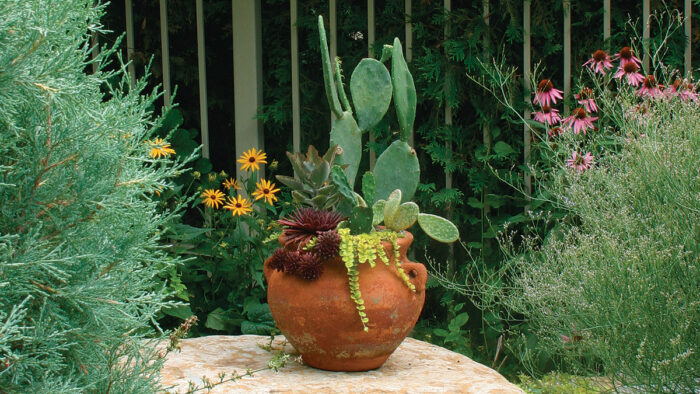
Whether it’s a view, a specimen plant, or a favorite vessel you want people to notice, a focal point draws attention and leads the eye from one distinct area or object to the next. It pulls you in for a while before you’re led off to enjoy other parts of the landscape or, better yet, another captivating combination. Without focal points, your garden lacks direction.
Container combinations are often the focal points in my garden. Their artistic and architectural features act as punctuation marks to make one pause; to add emphasis; or to establish an end to a particular area, a grouping of plants, or a garden destination. I sometimes use containers to bring a sense of unity to an area, by simply collecting a sample of the surrounding plants and arranging them in a harmonious composition within a pot. Combining similar plants and colors found nearby establishes focus while also complementing the surrounding garden.
Sometimes part of your landscape just needs a little extra spice. Container plantings can offer a quick fix by directing attention their way, making the sometimes lackluster garden act as the backdrop. If you like what you see in your containers, you can incorporate the same theme directly into your garden the following season.
Get the best of both worlds with high-impact, low-input plants
- Paddle plant (Kalanchoe thyrsiflora, USDA Hardiness Zone 11)
- African milk tree (Euphorbia trigona f. rubra, Zone 11)
- ‘Midnight’ aloe (Aloe gastrolea ‘Midnight’, Zones 10–11)
- Peacock echeveria (Echeveria peacockii, Zones 10–11)
- Dwarf jade (Crassula argentea, Zones 10–11)
Conditions: Full sun
This large, low-profile glazed bowl works well with the ground cover, providing just the right level of interest. Succulents are all about high impact with low input. The textural paddle plant grabs attention even from a distance, while the vertical African milk tree adds needed height. A smaller succulent grouping balances the design without competing with the focal point. The cool shades of green are perfectly accented by some hints of red. A mulch of pea gravel and river rocks works nicely with the flagstone in the garden and offers a break between the specimens in this collection and the rest of the garden.
Want big impact? Put an elephant in the room
- ‘Crystal White’ zinnia (Zinnia angustifolia ‘Crystal White’, annual)
- ‘Crystal Palace Gem’ geranium (Pelargonium ‘Crystal Palace Gem’, annual)
- ‘Illustris’ elephant’s ear (Colocasia esculenta* ‘Illustris’, Zones 8–11)
Conditions: Full sun
Because it uses plants found in the surrounding bed, this exciting yet uncomplicated container combination draws attention and establishes unity in the garden. Zinnias and geraniums are the basis for the design, but the dramatic ‘Illustris’ elephant’s ear shows who the VIP is. Magnificent leaders, like these, make creating focal points easy; you can’t help but be drawn to their larger-than-life qualities. The geranium accentuates the chartreuse stem and vein color of the elephant’s ear, while its orange-red flowers pick up the stamen color of the zinnia. The container’s horizontal ribs are a nice finishing touch, making everything appear wider, shorter, and more connected.
Plants are great, but don’t forget the container
- Variegated agave (Agave americana ‘Marginata’, Zones 9–11)
- Diamond Frost® euphorbia (Euphorbia ‘Inneuphdia’, Zones 10–11)
- ‘Ogon’ sedum (Sedum makinoi ‘Ogon’, Zones 6–9)
Conditions: Full sun
This simple recipe leaves the starring role to the variegated agave, while Diamond Frost® euphorbia and ‘Ogon’ sedum work as backup. Choosing a container is as important as deciding what to plant inside it. ‘Ogon’ highlights the lip of the classic urn while subtly picking up the narrow chartreuse margins of the agave. The color of the container grounds the design and is well suited to the stonework on the adjacent wall.
Try tradition, with a twist
- Bandana® Trailing Gold lantana (Lantana camara* Bandana® Trailing Gold, Zone 11)
- Zinfandel™ oxalis (Oxalis vulcanicola Zinfandel™, Zones 9–11)
- ‘Patriot Tangerine’ lantana (Lantana camara* ‘Patriot Tangerine’, Zone 11)
- ‘Torbay Dazzler’ giant dracaena (Cordyline australis ‘Torbay Dazzler’, Zones 10–11)
Conditions: Full sun
I like refreshing variations of old standbys. For years, I would shudder at the sight of yet another green spike, automatically paired with sassy red geraniums and vinca vine. This is the classic American container combination, used and overused. But something about it works: It follows the principles and elements of design. I’ve learned to appreciate container designs that give a nod to history—but with a twist. For example, why not pair a variegated version of the traditional green spike with a punchy lantana and some oxalis in place of geraniums and vinca vine? It’s classic but fun.
Use containers to build a view
- Miniature pine tree (Crassula tetragona, Zones 10–11)
- Coppertone sedum (Sedum nussbaumerianum, Zones 10–11)
- Crassula (Crassula pellucida, Zones 10–11)
- ‘Silver Spoons’ echeveria (Echeveria ‘Silver Spoons’, Zones 9–11)
- Trailing jade (Senecio jacobsenii, Zones 9–11)
- Flower dust plant (Kalanchoe pumila, Zones 10–11)
- ‘Hobbit’ dwarf jade (Crassula ovata ‘Hobbit’, Zone 11)
Conditions: Full sun
A beautiful succulent garden anchors the corner of this second-story suburban deck while encapsulating the muted colors of the distant countryside view. The iron container’s design mimics the overall mounded form of the arrangement. Basking in the hot sun, this worry-free ensemble of touchable textures captures your interest before leading your eye off to the view of the garden below and the rural vista in the distance.
Unlikely neighbors make a dramatic pairing
- ‘Black Magic’ elephant’s ear (Colocasia esculenta* ‘Black Magic’, Zones 8–11)
- Octopus agave (Agave vilmoriniana, Zones 9–11)
- ‘Red Trailing Queen’ coleus (Solenostemon scutellarioides ‘Red Trailing Queen’, Zone 11)
- Nasturtium (Tropaeolum majus cv., annual)
- Black-eyed Susan vine (Thunbergia alata, annual)
- ‘King’s Gold’ false cypress (Chamaecyparis pisifera ‘King’s Gold’, Zones 4–8)
Conditions: Full sun
This substantial, period-style cast-iron urn demands prominence and connects the combo to the surrounding historic neighborhood. The pedestal further accentuates its importance while giving the arrangement a boost above the garden. Unlikely neighbors, octopus agave and ‘Black Magic’ elephant’s ear coexist in harmony: The water-loving elephant’s ear and filler plants sponge up excess moisture, allowing the agave a safe haven. The reaching agave leaves radiate out from the base of the arrangement, while the towering elephant’s ear directs the eye down to the rest of the arrangement. Nasturtium and black-eyed Susan vine meander through and fill in gaps.
Aquamarine? Why not?
- ‘Gracillimus’ miscanthus (Miscanthus sinensis* ‘Gracillimus’, Zones 4–9)
- ‘Sweet Caroline Purple’ sweet potato vine (Ipomoea batatas ‘Sweet Caroline Purple’, Zone 11)
- Variegated potato vine (Solanum jasminoides ‘Variegata’, Zones 9–11)
- Dwarf yellow dahlia (Dahlia cv., Zones 9–11)
- ‘Pesto Perpetuo’ variegated basil (Ocimum × citriodorum ‘Pesto Perpetuo’, annual)
- Trailing rosemary (Rosmarinus officinalis ‘Prostatus’, Zones 8–11)
- ‘Spicy Globe’ basil (Ocimum basilicum ‘Spicy Globe’, annual)
- Sweet bay (Laurus nobilis, Zones 8–11)
- ‘Silver Falls’ dichondra (Dichondra argentea ‘Silver Falls’, Zones 10–11)
- ‘Firecracker’ fuchsia (Fuchsia triphylla ‘Firecracker’, Zones 10–11)
- Purple heart (Tradescantia pallida ‘Purpurea’, Zones 8–11)
- ‘Sunset Velvet’ oxalis (Oxalis siliquosa ‘Sunset Velvet’, Zones 8–10)
Conditions: Full sun
I love the bold use of color when handled well. Here, aquamarine ceramic containers not only unify this lake home’s patio plantings but also connect directly to the nearby water. The planters yield one successful combination after another, not the least of which is a small herb pot in the foreground, the ingredients of which—basil, rosemary, and bay—are used regularly in the kitchen.
Experience the power of one
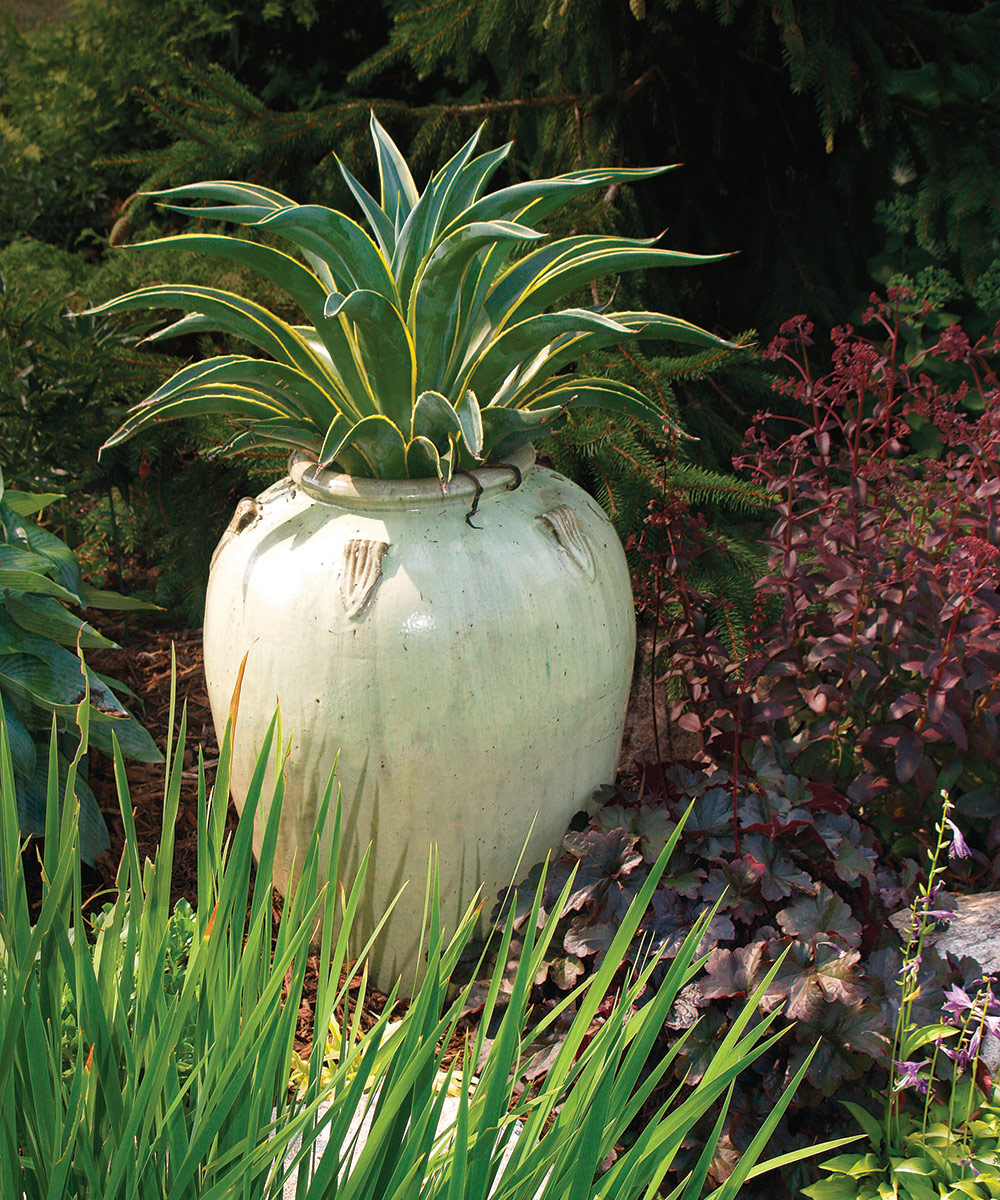
- Variegated dwarf agave (Agave desmettiana ‘Variegata’, Zones 10–11)
Conditions: Full sun
Sometimes a plant just wants to be by itself, and that’s all right. In this case, a cream-colored ceramic container is home for a variegated dwarf agave, adding a necessary focal point to this established border. The agave and pot are perfect for each other. The line of the container draws attention to the mouth of the pot, while the line of the agave radiates outward. All by themselves, the agave and pale pot might seem plain, but thanks to the neighboring dark foliage, a vivid complementary color scheme plays out.
Grab attention all summer with a big Bonfire®
- ‘Wojo’s Jem’ vinca vine (Vinca maculata ‘Wojo’s Jem’, Zones 7–10)
- Bonfire® begonia (Begonia boliviensis Bonfire®, Zones 10–11)
- Bauer’s dracaena (Cordyline baueri, Zones 9–11)
Conditions: Full sun to partial shade
This window box is necessary to draw focus to and create interest in a part of this backyard living area where in-ground plantings are not an option. I can’t get enough of this Bonfire® begonia, which is a winner pretty much everywhere it is planted. Talk about flower power: Bonfire® just doesn’t stop, producing blooms all summer long. If you are up for the challenge, you can store the begonia corms inside for winter and replant them come spring. With the addition of a couple of Bauer’s dracaenas and a few ‘Wojo’s Jem’ vinca vines, this dramatic scene is complete.
One is good; two is better
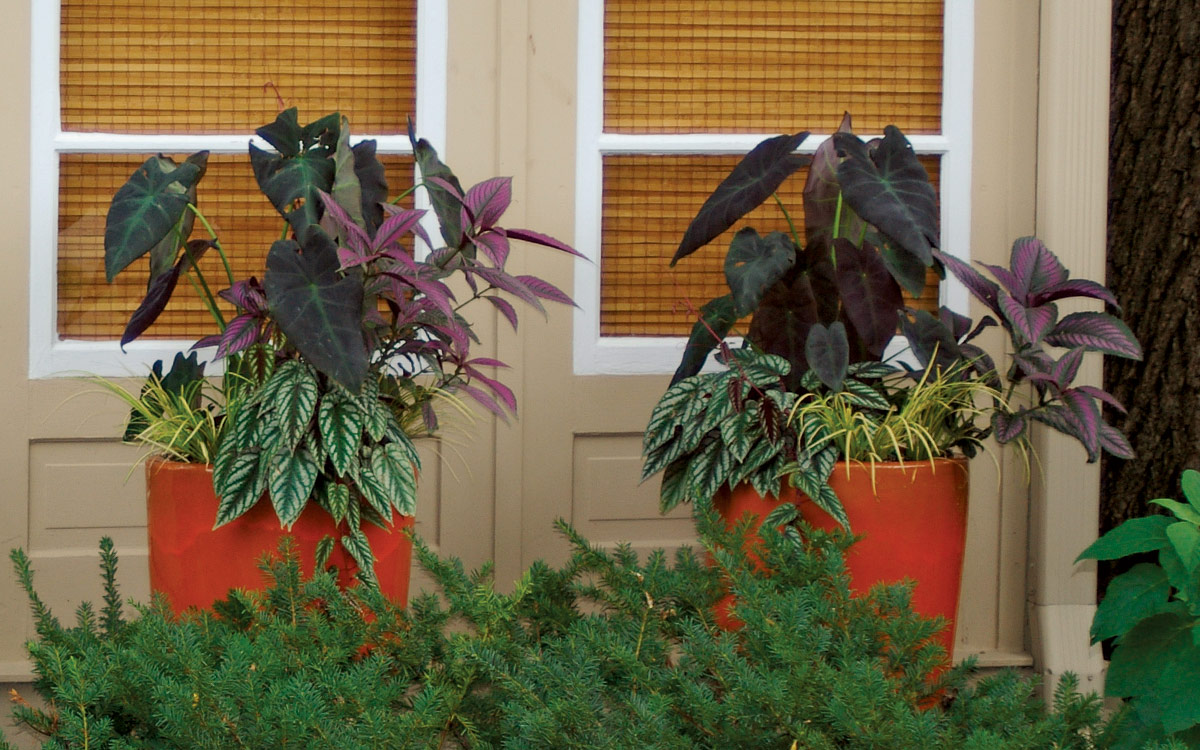
- ‘Illustris’ elephant’s ear (Colocasia esculenta* ‘Illustris’, Zones 8–11)
- Persian shield (Strobilanthes dyerianus, Zones 9–11)
- Rex begonia vine (Cissus discolor, Zone 11)
- Golden dwarf sweet flag (Acorus gramineus ‘Ogon’, Zones 6–9)
Conditions: Full sun
Containers should bridge the gap between house and garden. Far too often the two are treated as separate entities. Here, interesting plants and wonderful orange pots team up to make the connection with flair. The bold container color ties in with the window blinds and perfectly complements the mostly purple plant palette. Taller pots allow the container color to be seen above the yew hedge, which adds a bit of moxie to an otherwise humdrum landscape planting. Using symmetrical containers of the same design doubles the impact.
On the rocks? Turn this negative into a positive
- Spineless prickly pear cactus (Opuntia ellisiana, Zones 7–10)
- Golden creeping Jenny (Lysimachia nummularia* ‘Aurea’, Zones 4–8)
- Jovibarba (Jovibarba hirta, Zones 5–8)
- ‘Chocolate Soldier’ panda plant (Kalanchoe tomentosa ‘Chocolate Soldier’, Zones 10–11)
Conditions: Full sun
Most gardens have dead spots: areas that never get much attention. This garden used to have one—but not anymore. The warm terra-cotta pot and bold textures of this interesting container combination, along with its location on a large garden stone, pull the viewer’s attention into an otherwise overlooked spot. Colors from the surrounding landscape lead the way in plant selection: Golden creeping Jenny trickles out of the side of the container and mirrors the same plant nearby; a coarse-textured cactus repeats the calming blue-green of the thyme and juniper; and the red of jovibarba hints at nearby coneflowers.
* These plants are considered invasive in some areas of the country. Please visit invasiveplantatlas.org for more information.
—Scott Endres owns Tangletown Gardens in Minneapolis.
Photos, except where noted: Brandi Spade



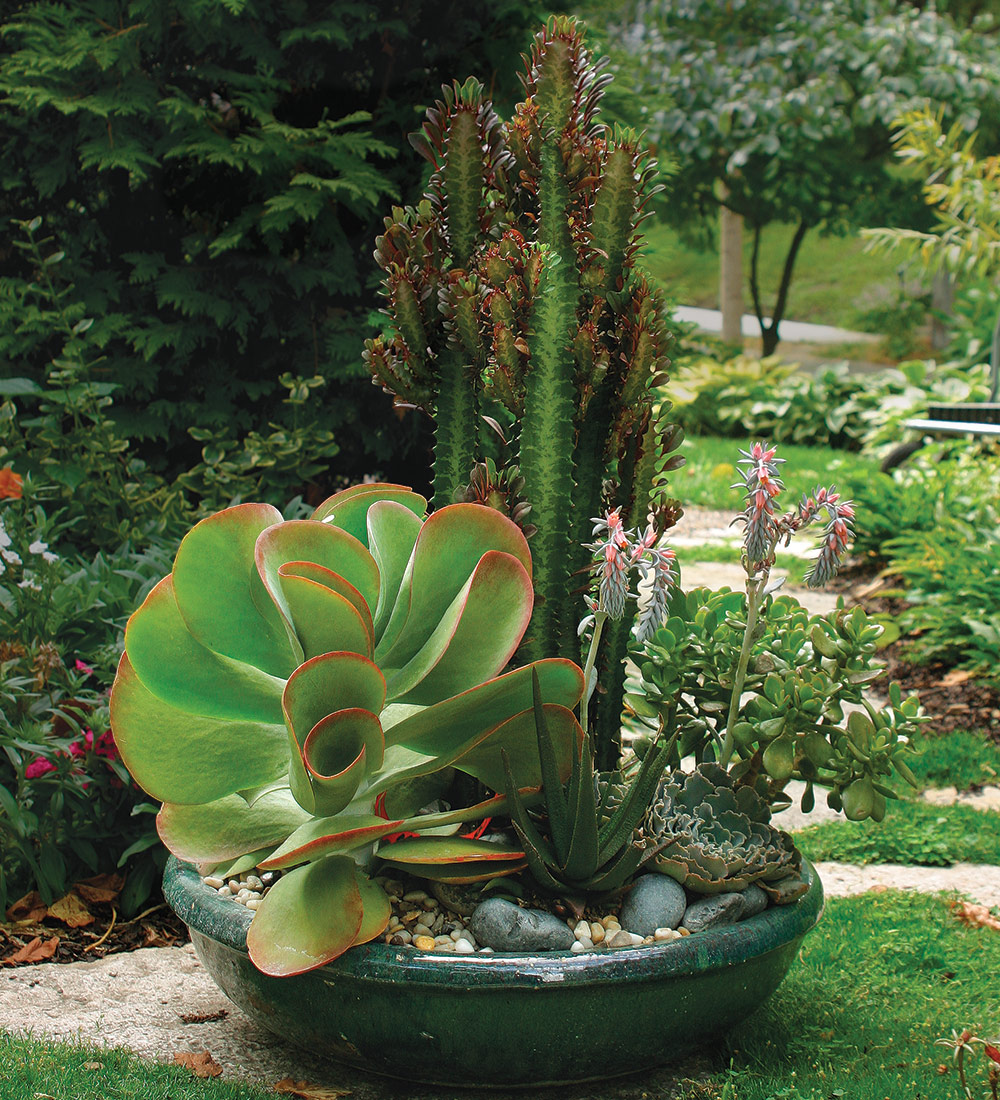
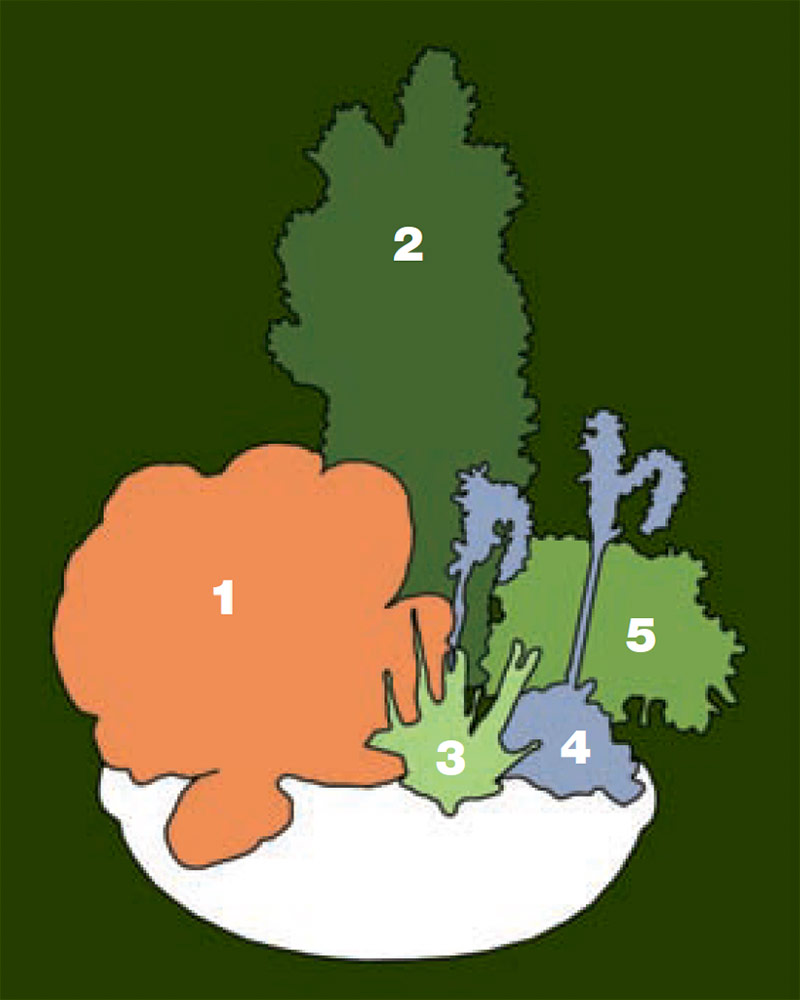


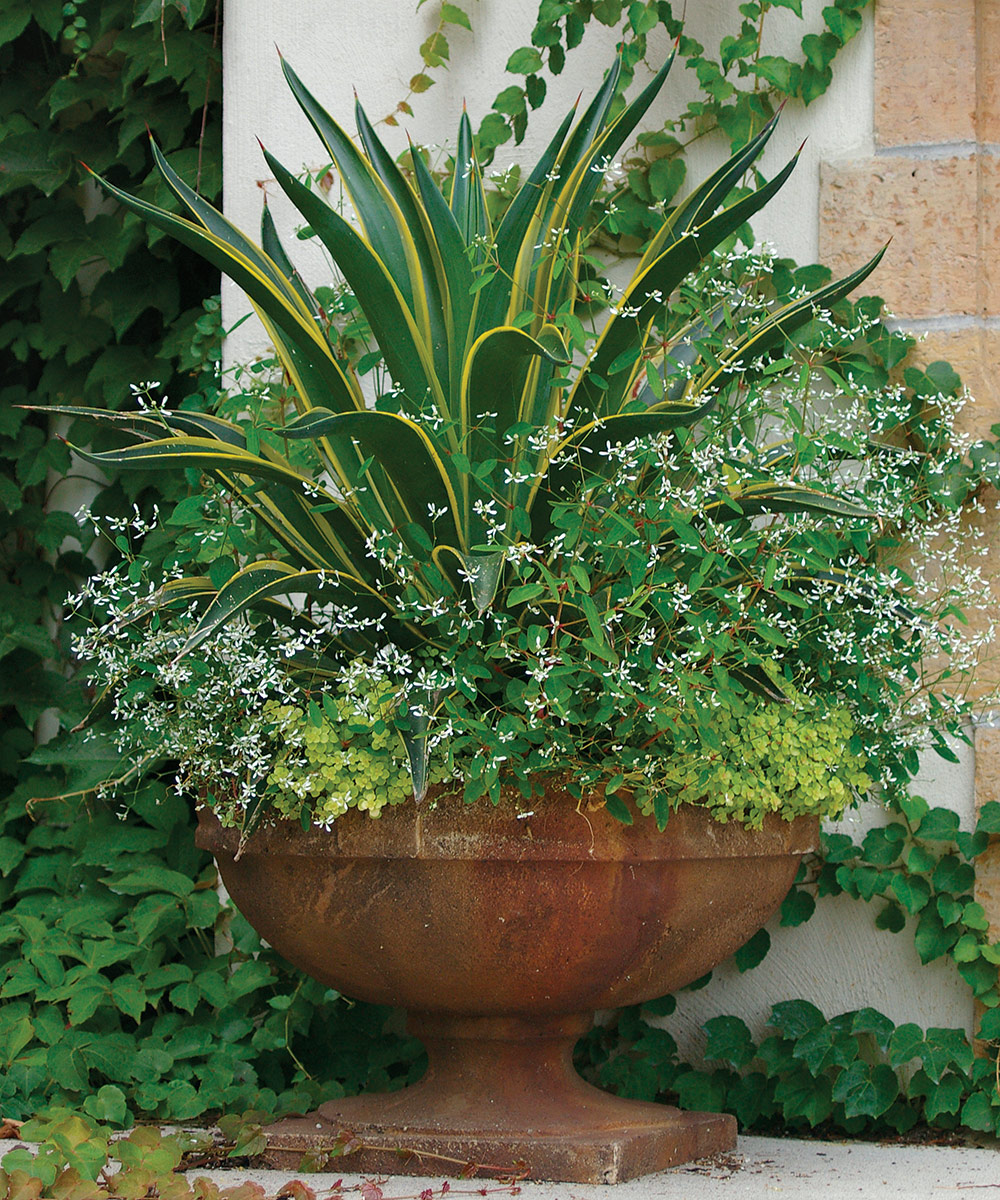
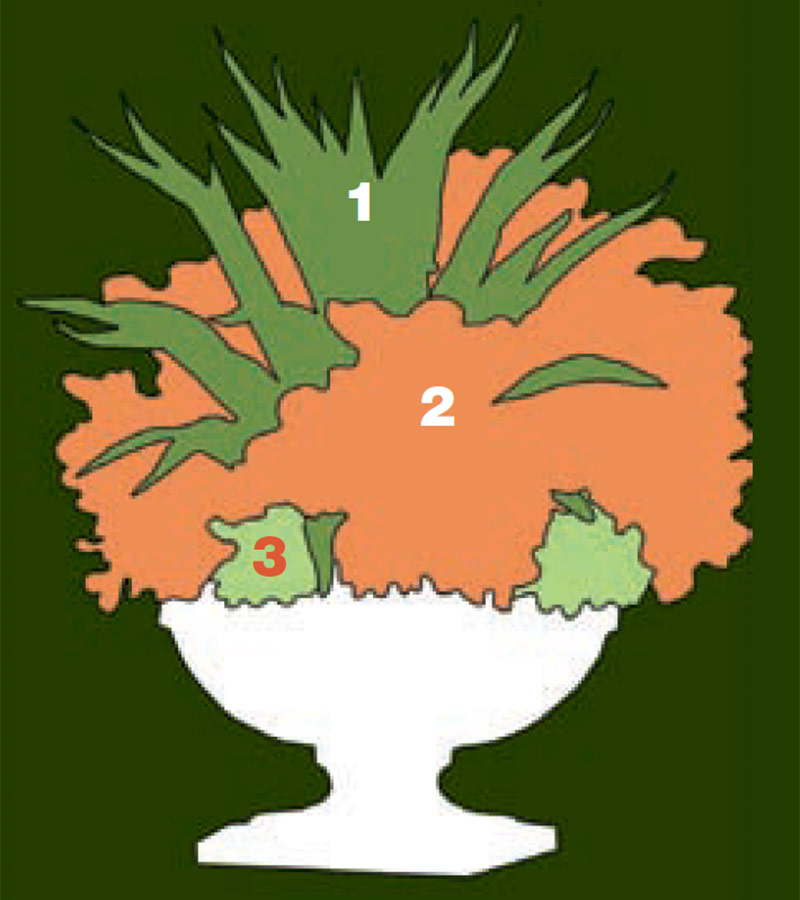
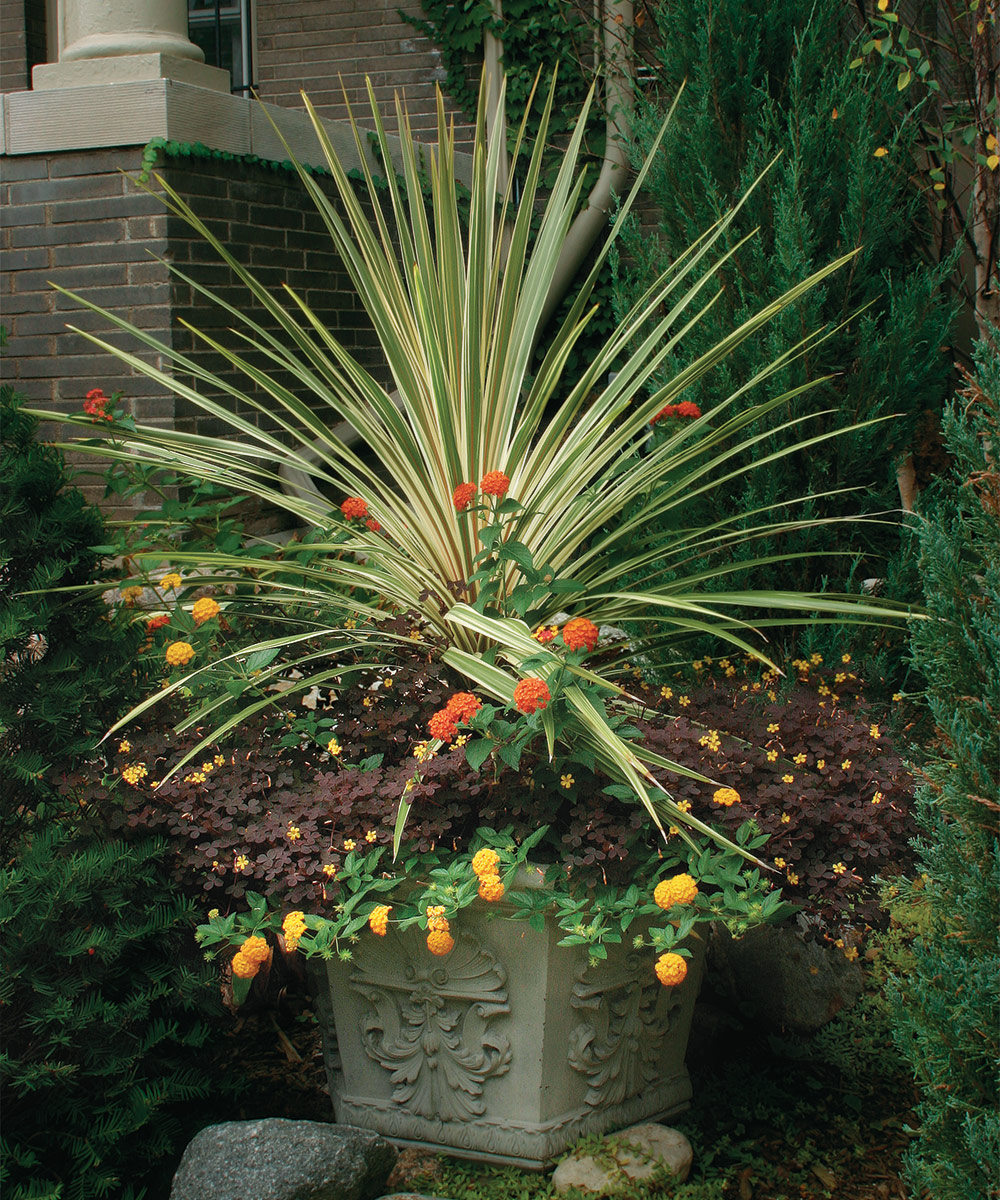
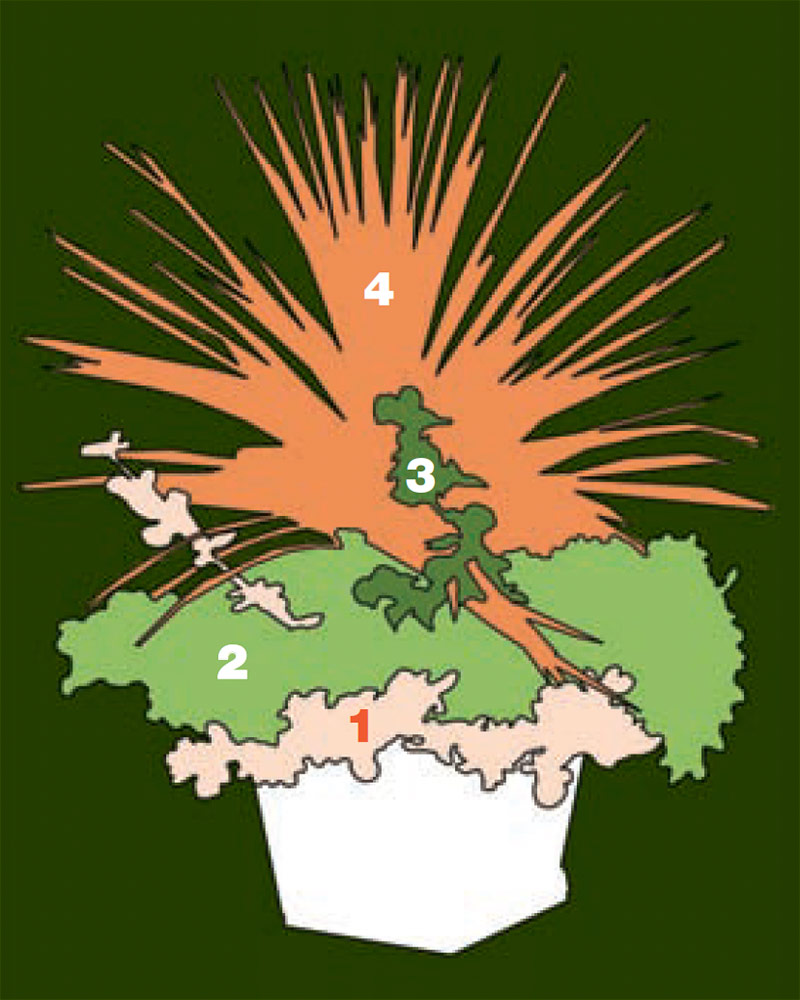
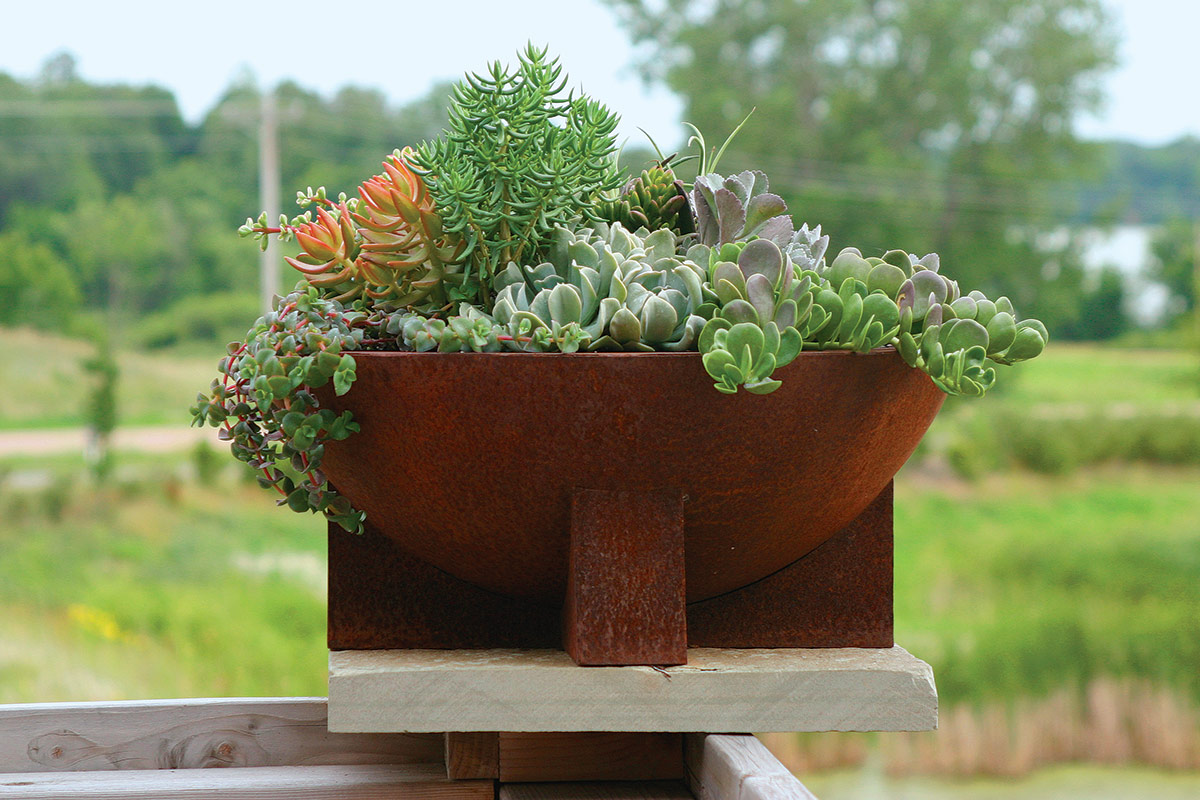
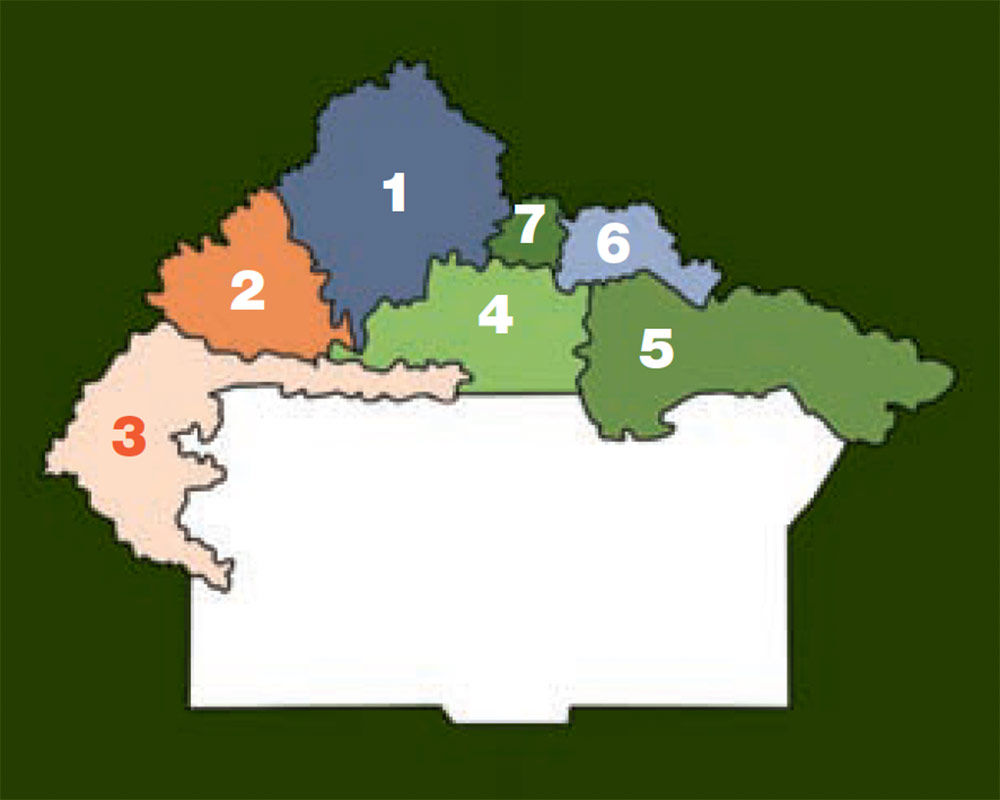
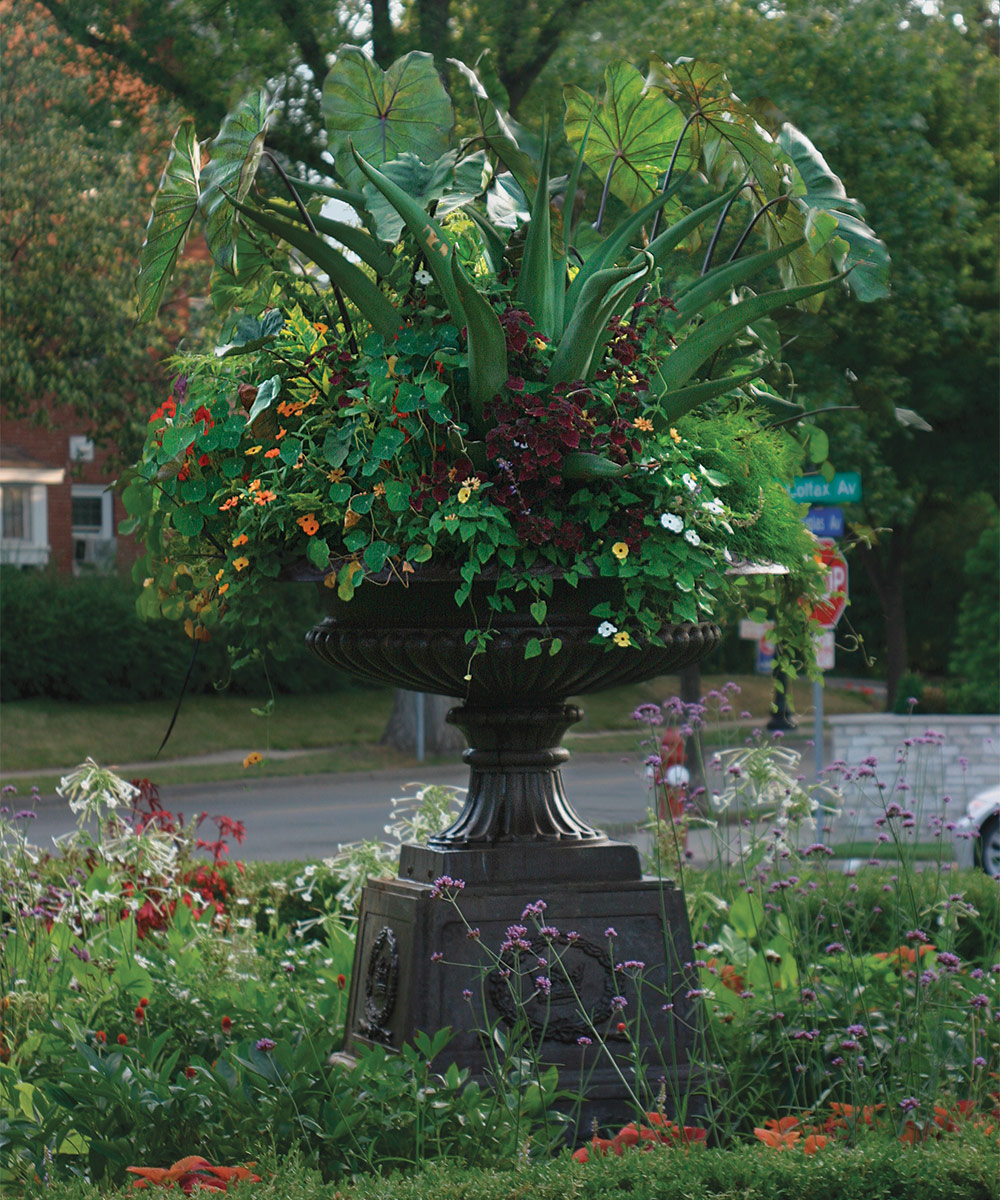
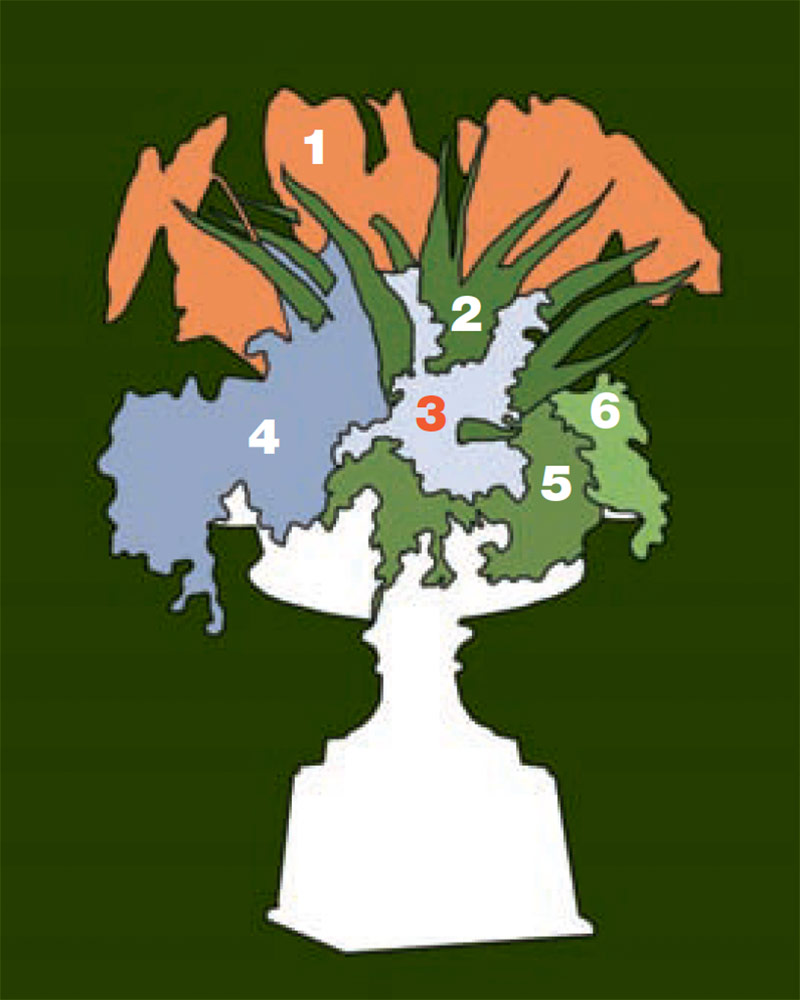
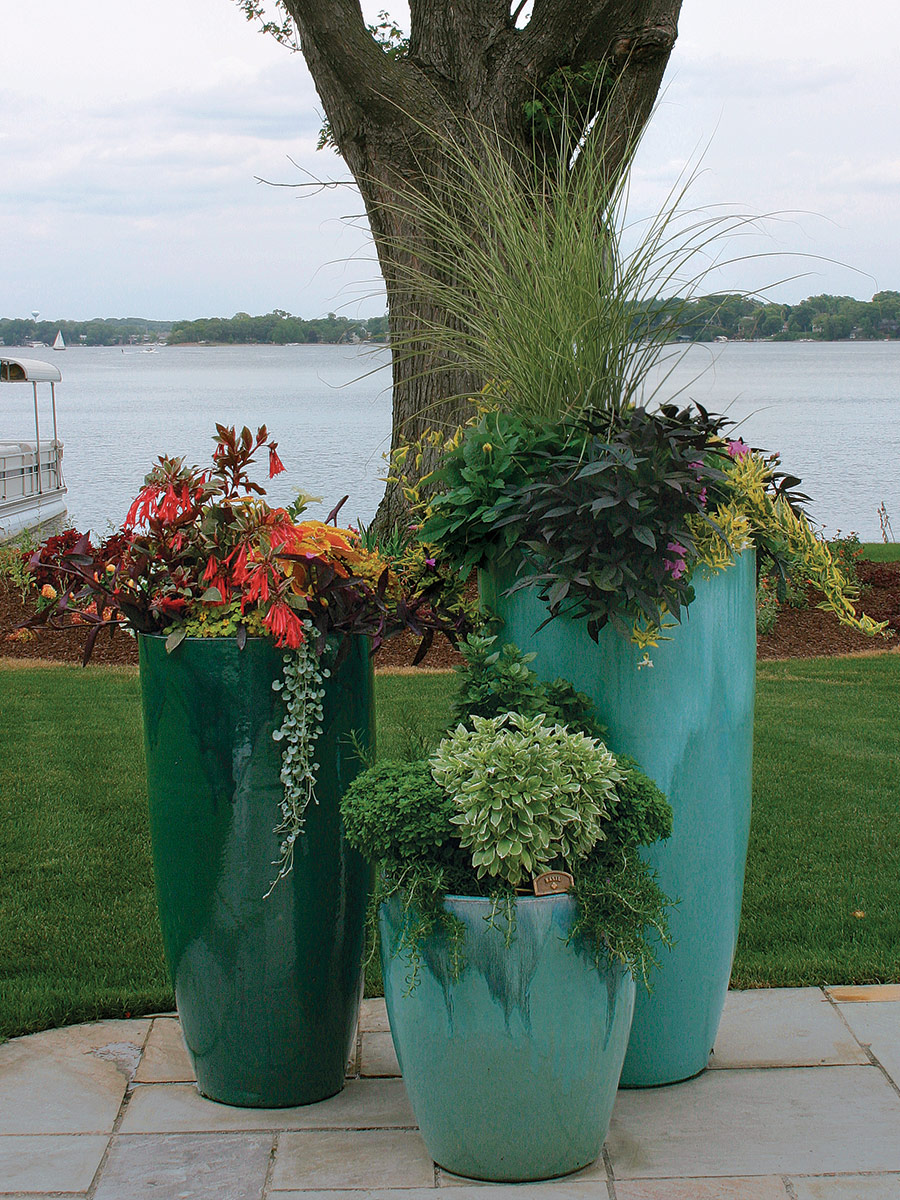
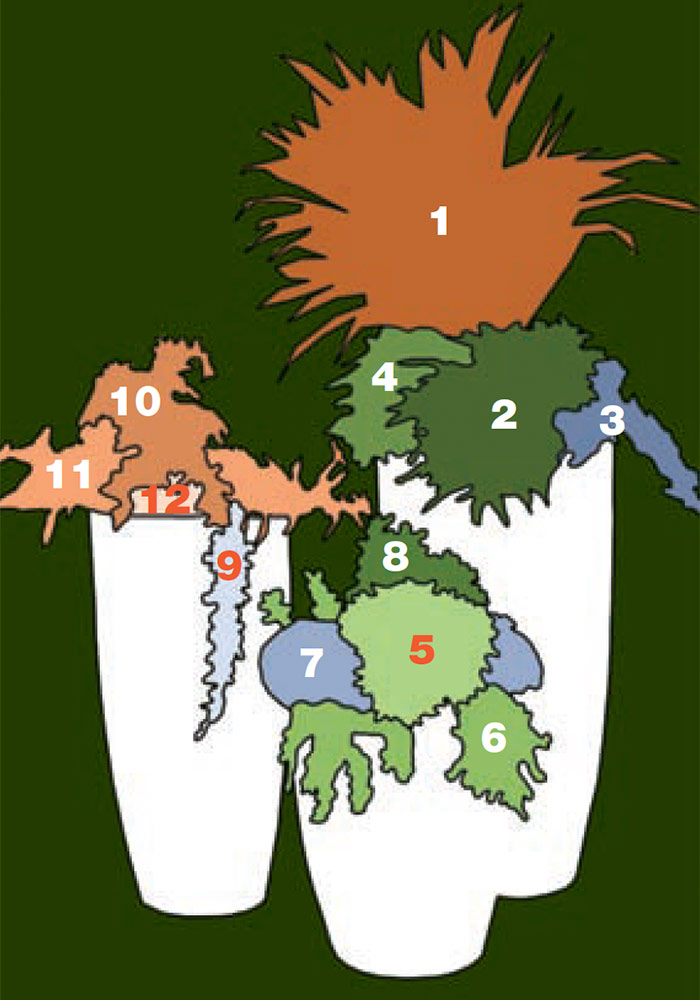
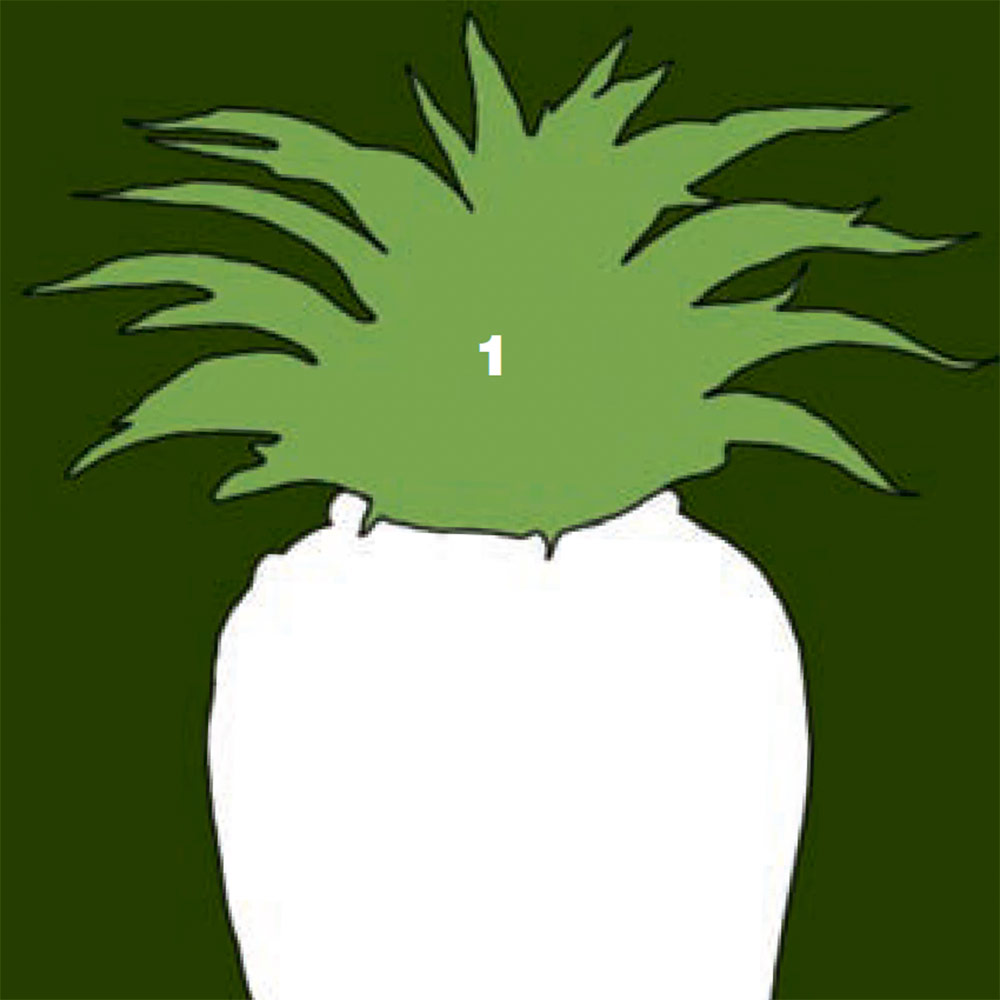
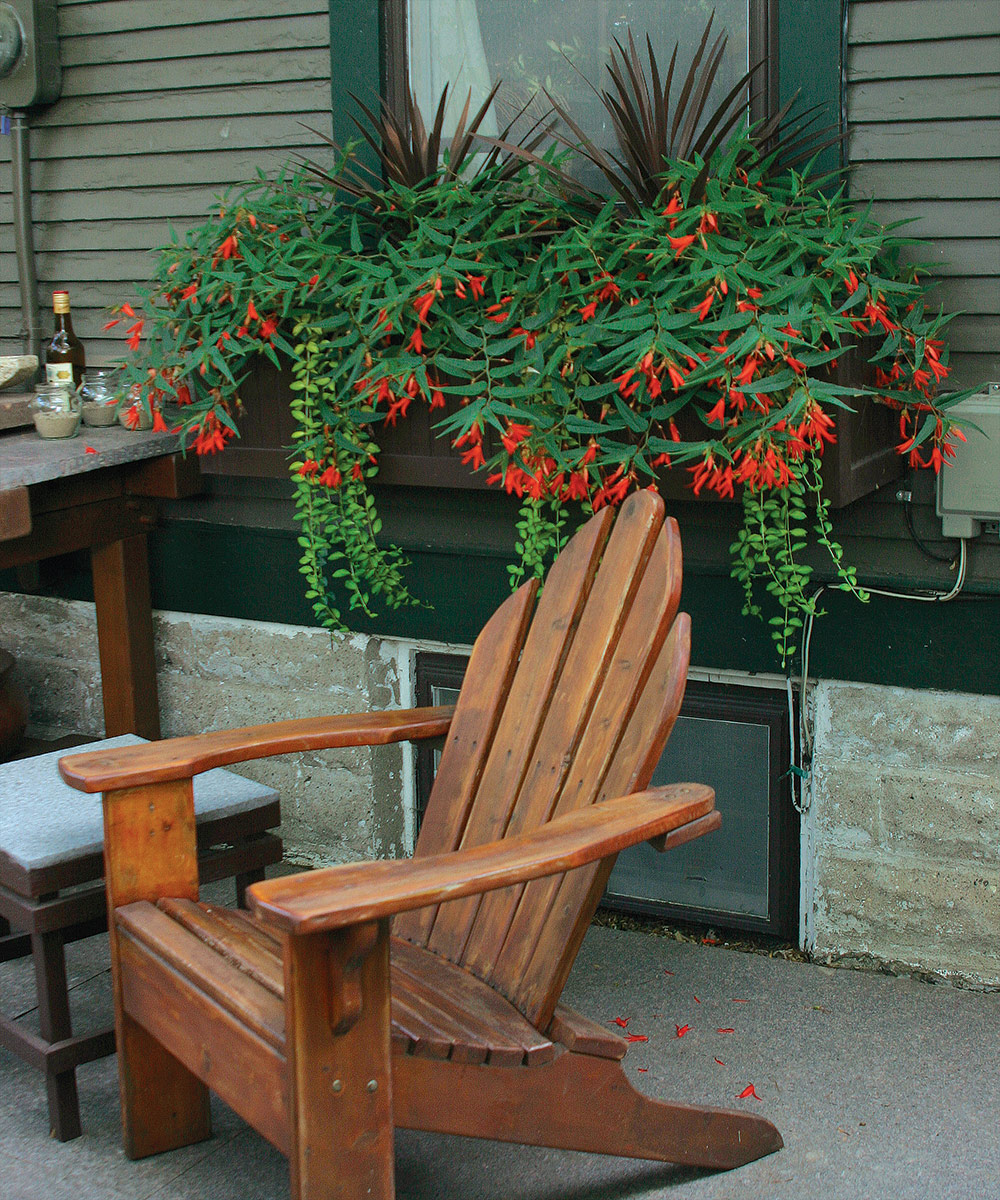
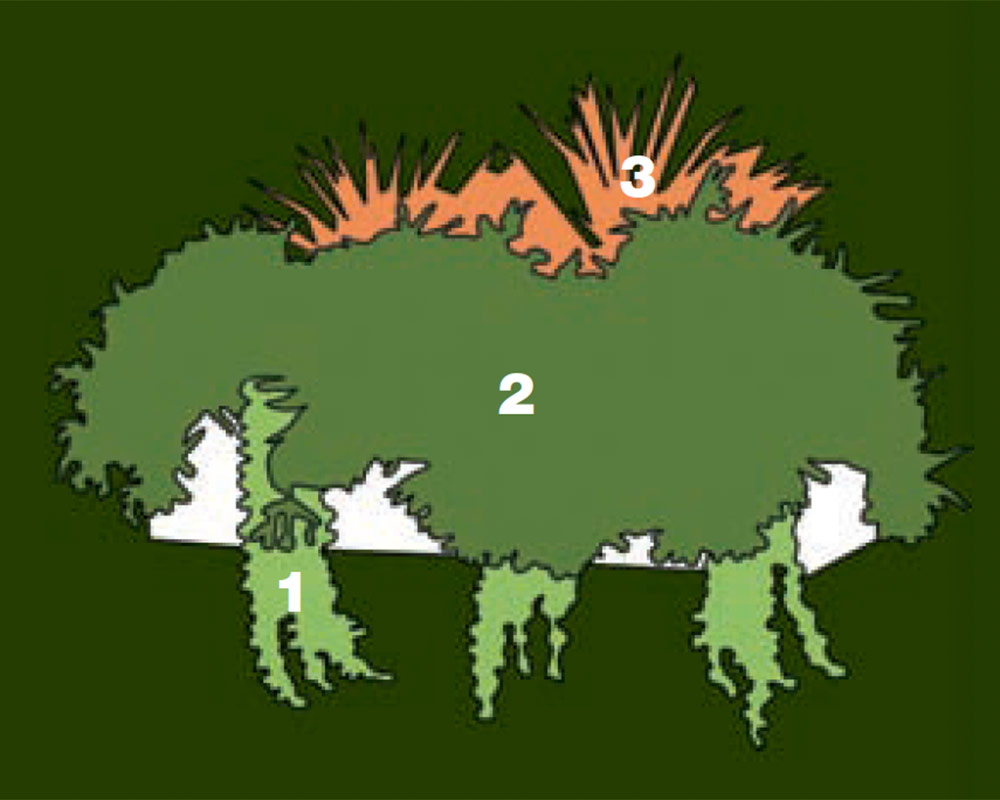
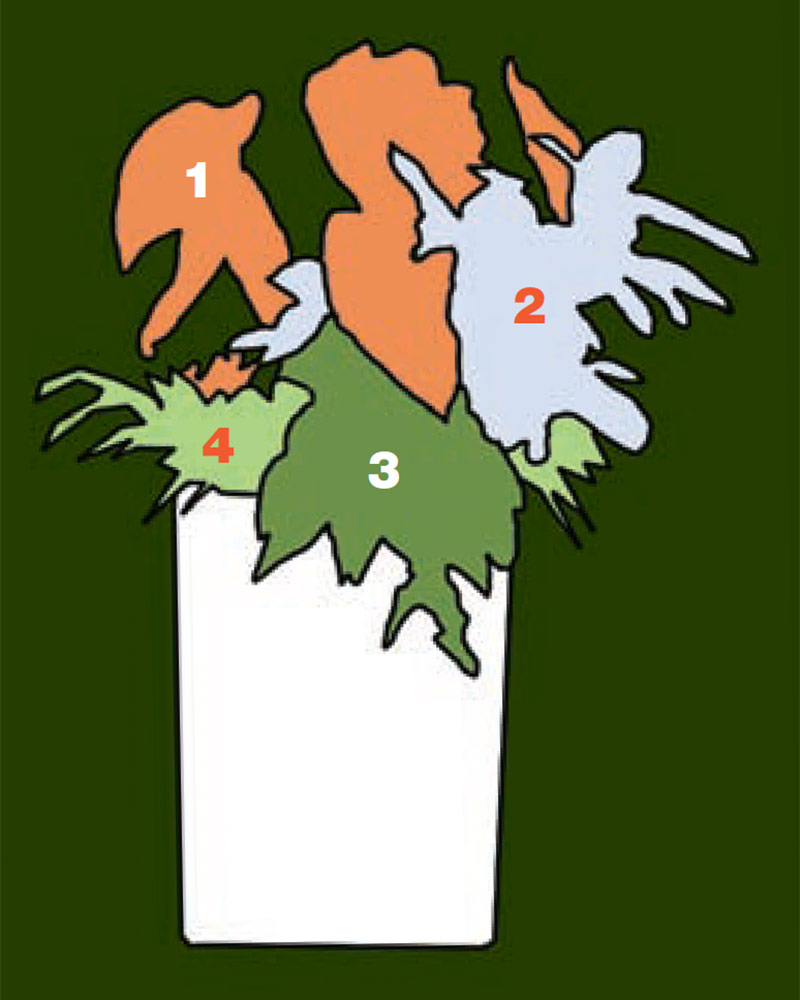
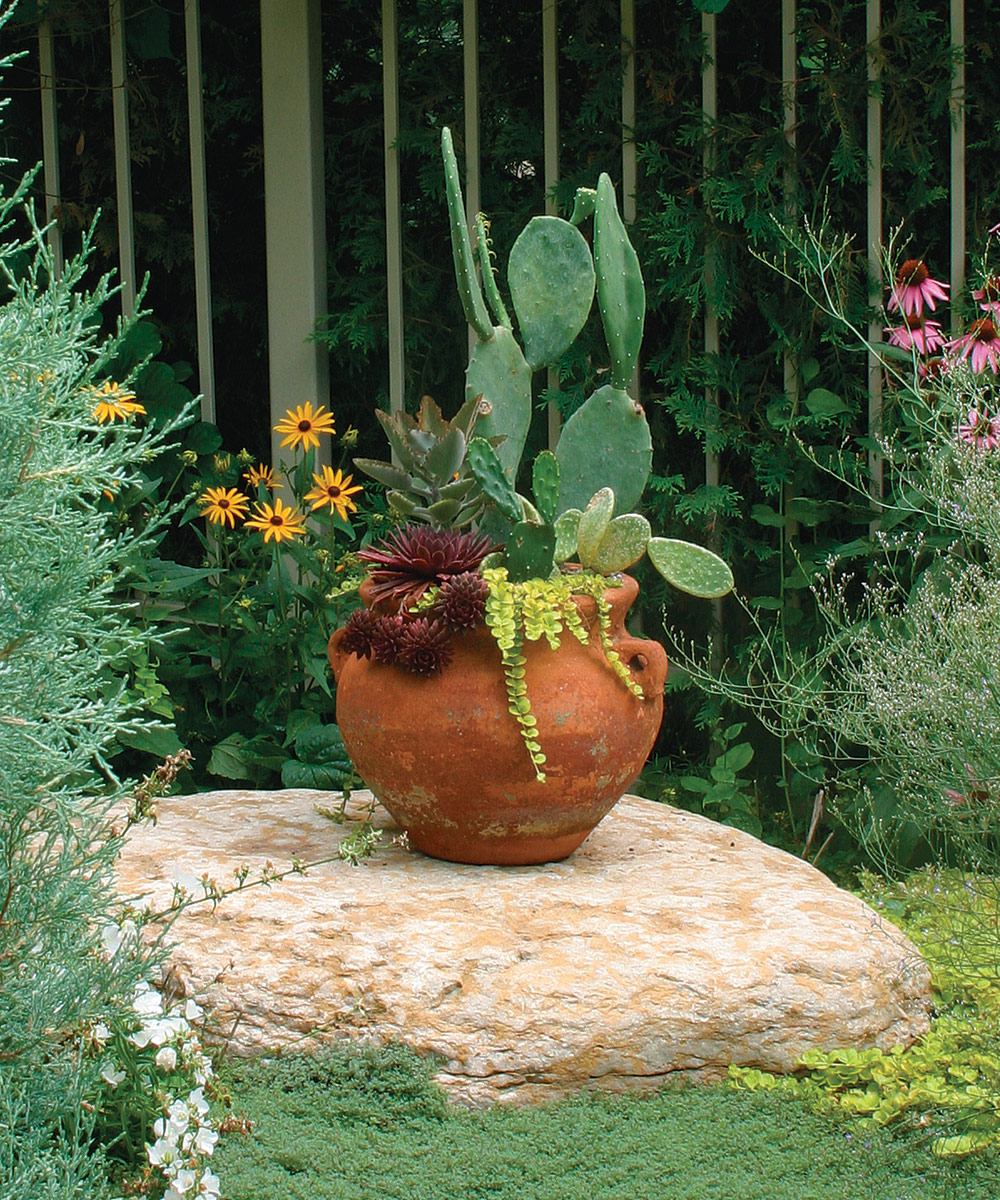
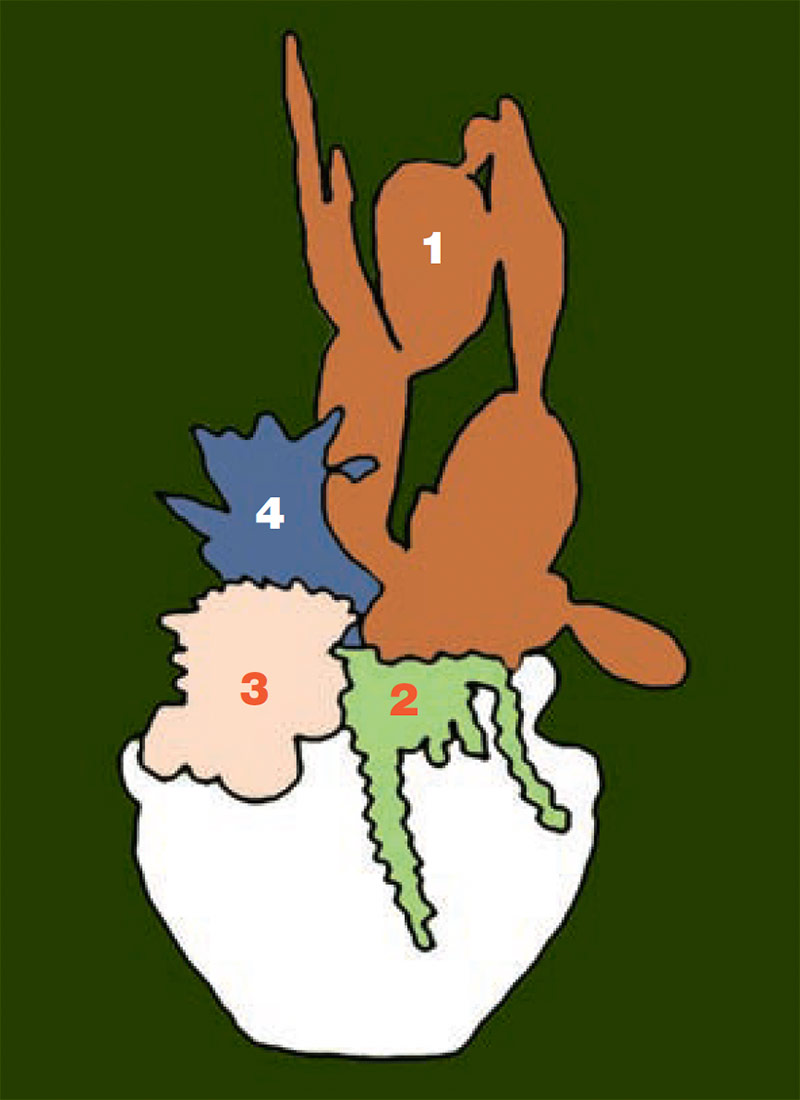



Comments
Log in or create an account to post a comment.
Sign up Log in